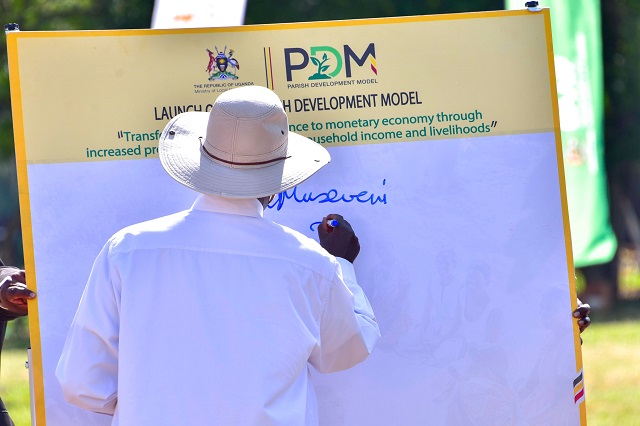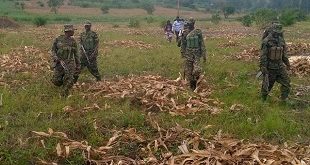
Kampala, Uganda | THE INDEPENDENT | Government initiatives put in place over the last 10 years to reduce poverty or create wealth have had mixed returns either due to mismanagement or under-funding, according to a new report on Uganda’s poverty levels.
The 2021 Poverty Status Report examines poverty trends and dynamics in Uganda over the last eight years. It comes at a time when the economy is grappling with the after-effects of the COVID-19 pandemic, rising costs of living, income inequality, a bulge in the youth population, climate change and land conflicts.
Positively, it also comes at a time when there is a call for deeper economic cooperation through the African Continental Free Trade Area and the admission of the Democratic Republic of Congo to the East African Community.
The government has also plans to increase the drive to reduce subsistence farming and informality and drive the economy towards middle-income status through industrialization. Among the initiatives is the commitment to improve the welfare of Ugandans through the National Development Plan III (NDP III) and the Parish Development Model (PDM), which initially aimed at cutting the poverty rate to 14 per cent by 2020.
The rate according to the new report, reduced instead to 20.3 percent while conversely, the number of people in poverty increased from 8.03 million to 8.31 million. This indicates that as much as the poverty rate is falling, the number of poor people is increasing, which needs to be factored into the design of interventions.
The report, which does not rule out continued economic (GDP) growth attributed this irony to the population growth relative to the growth in resources available to sustain the people. It estimated that by the end of the strict COVID-19 lockdown in 2021, the number of the poor had further increased due to a reduction in jobs, reallocation of government resources and reduced consumption, among others.
This Poverty Status Report 2021 is guided by the theme: ‘Jobs, informality and poverty in Uganda: Insights on performance before and during COVID-19.’ In his comment on the report, the Permanent Secretary at the Ministry of Finance, Ramathan Ggoobi says the government has been investing in areas aimed at reducing poverty, though external shocks have affected these initiatives.
“These infrastructure investments have mainly been in energy, roads, and information, communication, and technology sectors targeted to support agro-industrialization,” he says, adding that these have led to a rise in average incomes from 824 dollars in 2016/17 to 964 in 2019/20. “However, these gains in economic growth are threatened by high fertility rates that translate into pressures on the environment and household savings for investment,” Ggoobi adds.
At the time release of the last Poverty Status Report in 2014, several recommendations were made to improve the situation, which by then, showed that 6.7 million or 19.7 per cent of Ugandans were living in poverty. The poverty rate had dropped from 24.5 per cent in 2003 to 2010, and Uganda was hailed for halving the poverty levels and therefore achieving the first Millennium Development Goal of reducing poverty by half.
It was anticipated that the recommendations would significantly reduce this figure. However, the national poverty rate started increasing and reached 21.4 per cent in 2016/17 before dropping back to 20.3 per cent in 2019/20.
Some of the recommendations from the 2014 report were a government framework that would allow increased investment in infrastructure and a policy that would allow ‘moderately higher inflation” to raise the prices of local products. It also recommended for the development of banking and credit allocation policies be enhanced including recapitalizing Uganda Development Bank and establishing credit initiatives for smallholder farmers and businesses.
Produce markets needed to be better regulated to ensure fair prices for farmers, and this called for the creation of a regulatory body to ensure farmers earn better from their investments the Uganda National Bureau of Standards (UNBS) needed to be equipped to enforce bans on the importation and sale of substandard and counterfeit agro-inputs and manufactured products.
They also called for the restructuring of the NAADS to focus less on input provision and more on providing quality extension and advisory services. In response, a number of initiatives have over time been put in place to implement these recommendations.
But the new report says the results have been mixed. “For instance, agricultural extension services through Operation Wealth Creation (OWC) are hinged mainly on input distribution, which sharply contrasts with National Agricultural Advisory Services (NAADS),” the report says.
It notes the increase in commercial farming, boosting the growth of the agro-processing industry, but says access to affordable credit for agricultural ventures is still a hurdle. The report also faults the adjustments in the social security program for older persons.
“Whereas social protection under the Social Assistance Grant for Empowerment (SAGE) project is being expanded across the country, the eligibility age has been increased from 65 to 80 years, leaving out other vulnerable elderly populations outside the grant scheme,” it says adding that workers in the informal sector remain vulnerable as they have no social protection.
Another shortcoming is the absence of health insurance while the National Health Insurance scheme is yet to be operationalised, meaning that households continue to face high out-of-pocket spending on health.
The report shows that while many people were lifted out of poverty, 22 per cent of non-poor people sank below the poverty level, hence the need for initiatives to maintain the non-poor above the line.
“These challenges require flexible approaches to the way planning and policy management is conducted,” says Goobi.
The national poverty rate decreased from 21.4 per cent in 2016/17 to 20.3 per cent in 2019/20.
The decline in the poverty rate is consistent with the overall long-term trend, although the incidence of poverty is higher in rural areas than in urban areas.
Based on the Uganda National Panel Survey (UNPS), 2018/19, only 24.87 per cent of those who were poor in 2015/16 remained poor in 2018/19. This indicates that in the long run, chronic poverty is falling.
However, 22 per cent of those who were non-poor in 2015/16 fell into poverty in 2018/19. This indicates a need to design programmes to prevent the non-poor from falling into poverty. The Northern Region remains the epicentre of poverty in the country, with levels increasing from 32.6 per cent in 2016/17 to 35.92 per cent in 2019/20. This is attributable to adverse weather conditions and a high dependency on subsistence crop farming.
The Uganda National Household Survey 2019/20 shows that the northern region has the highest percentage (52.2) of households in the subsistence economy, 30.2 per cent of whom depend on subsistence farming, which makes the area vulnerable in times of weather shocks and poor farm harvests.
The Acholi Sub-region emerged as the poorest in the country with a poverty rate of 67.68 per cent, which more than doubled from the 2016/17 levels. The Karamoja Sub-region follows closely after the poverty rate increased from 60.18 to 65.65 per cent largely due to similar reasons, while Lango also posted a deterioration to 27.6 per cent, according to the report.
West Nile, on the other hand, improved cutting poverty levels by half to 196.9 per cent. In 2019/20, the Eastern Region’s poverty rate decreased and 29.2 per cent were poor, compared to 35.67 per cent in 2016/17. According to the report, all the sub-regions in the eastern region experienced a decrease in the poverty rate, with the Elgon Sub-region topping the improvement with a drop from 34.9 per cent to 13.2 per cent.
The Central Region experienced a slight decrease in the poverty rate from 8.9 per cent in 2016/17 to 8.73 per cent in 2019/20, also the number of poor people increased from 900,000 to 990,000.
The better figures were driven mainly by better living conditions in the Kampala Metropolitan area, and if Wakiso, Mukono Municipality and Kampala were excluded from the central region, the rate would be 12.41 per cent.
According to the report, in the Western Region, the poverty rate increased from 12.5 per cent to 14.4 per cent in 2019/20 as animal pests and diseases hit some sub-regions there. The Kigezi Sub-region emerged as the poorest in the region with 27.8 per cent of the people poor, while poverty in Ankole Sub-region also increased from 7.2 to 13.2 per cent in 2019/20.
In the mid-west, the poverty rate in Tooro remained relatively stable at about 13 per cent, while according to the report, “Bunyoro experienced an impressive reduction in poverty from 17.26 per cent in 2016/17 to 9.78 per cent in 2019/20.”
Overall, Acholi, Karamoja, Bukedi and Busoga are the sub-regions with poverty rates higher than the national average. It shows that Elgon and Bunyoro Sub-regions experienced the most significant decrease in the poverty rate.
“Access to government programmes such as Operation Wealth Creation; the Uganda Women Entrepreneurship Programme; and the Youth Livelihood Programme, new roads, electricity, schools, area development projects and improved healthcare is associated with statistically significant poverty reduction.
“The third Northern Uganda Social Action Fund was found to have a poverty-reducing impact, but the effect is not substantial,” the report claims done with support from the United Nations Development Program, UNDP says.
Their report recommends improved agricultural production and commercialization of agriculture by strengthening demand-driven agricultural extension services tailored to suit agroecological zones.
It also calls for the revival of Cooperatives to coordinate extension services, value addition and marketing, as well as ensuring that the Parish Development Model harnesses agricultural households’ value chain development and production capacity.
The report says the government should develop strategies to improve farmers’ responses to natural shocks such as drought, storms, pests and diseases. “This could involve training in climate change adaptation, agricultural insurance, and increased funding for research in drought and disease-resistant crops.”
Others are improved effectiveness and efficiency of public goods and services such as health care, education, roads and electricity, prioritisation of family planning and population control, and enhancement of social protection policies to guard against shocks like COVID-19.
*****
URN
 The Independent Uganda: You get the Truth we Pay the Price
The Independent Uganda: You get the Truth we Pay the Price


